Tracking North America Fuel Pump Price Data Scraping Insights For 2025 Accurate Market Trends
Introduction
In 2025, the North American fuel market is undergoing significant transformations, shaped by economic fluctuations, geopolitical developments, and advancements in technology. For both businesses and consumers, staying informed about these changes is essential to making strategic decisions. Fuel Pump Price Data Scraping has emerged as a powerful tool to track and analyze these evolving pricing trends, offering timely and accurate insights into market behavior.
By leveraging Pricing Intelligence Data Scraping, organizations can efficiently collect and interpret fuel price information, enabling more precise forecasting and competitive analysis. This method not only streamlines data gathering but also empowers decision-makers with actionable insights, helping them respond quickly to market shifts and optimize fuel-related strategies.
Understanding Fuel Price Dynamics in North America
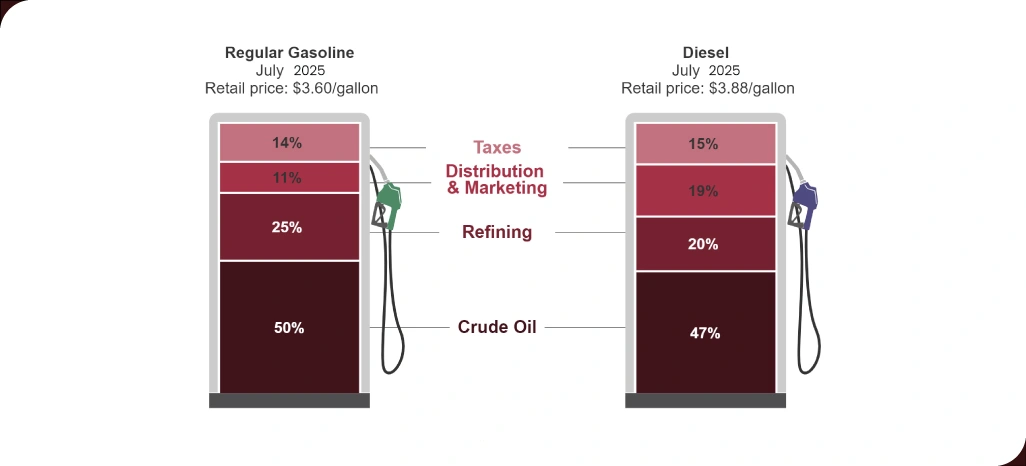
Fuel prices across North America stem from shifting economic, geopolitical, and market-driven factors. For businesses, fleet operators, and consumers, understanding these dynamics with the help of a Fuel Pump Price Intelligence Scraper is essential for making smarter, data-backed decisions.
Key drivers include:
- Crude Oil Prices
Crude oil remains the backbone of fuel pricing. Changes in global oil markets, including production cuts, geopolitical tensions, or natural disasters, can directly affect gasoline and diesel prices. Even minor fluctuations in crude oil benchmarks can ripple through to retail fuel, impacting operational costs for businesses and commuting expenses for consumers. - Supply and Demand
Fuel costs are susceptible to supply chain conditions and consumption patterns. Seasonal demand spikes, such as summer travel or winter heating needs, can push prices higher. Additionally, refinery maintenance, pipeline disruptions, or geopolitical events may constrain supply, causing temporary price volatility across regions. - Government Policies
Tax structures, environmental regulations, and trade agreements significantly influence fuel pricing. Changes in excise taxes, carbon credits, or import/export policies can either increase or stabilize retail fuel costs. Businesses must monitor these regulatory shifts to anticipate cost changes and adjust procurement strategies effectively. - Market Speculation
Traders’ perceptions of future supply and demand trends can create price swings independent of immediate physical market changes. Futures markets, geopolitical forecasts, and economic indicators all contribute to speculative pricing, affecting the day-to-day cost of fuel across North America.
Careful analysis of these factors, coupled with Real-Time Price Monitoring, enables businesses and consumers to respond proactively to market changes and optimize fuel expenditure.
The Role of Data Scraping in Fuel Price Monitoring

Fuel Price Monitoring has become increasingly critical for businesses and consumers navigating the dynamic energy market. One of the most effective methods to gain precise insights is through Data Scraping For Fuel Pump Price Insights. This process involves systematically extracting information from multiple online sources, including gas station websites, fuel price aggregators, mobile apps, and government fuel databases, providing a rich dataset for analysis.
Implementing data scraping for fuel prices offers several strategic advantages:
- Real-Time Data Collection: Automated scraping tools enable businesses to capture the most current fuel prices as they are updated online. This continuous data flow ensures that companies remain informed about sudden market fluctuations, enabling timely operational decisions and price adjustments.
- Comprehensive Geographic Coverage: Unlike manual collection methods, scraping can gather data from numerous locations across North America. This provides a detailed, region-specific perspective on fuel costs, highlighting price variations between states, cities, and even individual neighborhoods.
- Historical Data Analysis: By systematically accumulating fuel price data over time, businesses can identify patterns and trends. Historical datasets allow for predictive modeling, enabling stakeholders to forecast potential price changes, plan procurement strategies, and optimize budget allocations.
Leveraging these capabilities, organizations can engage in Fuel Pump Price Tracking North America, equipping themselves to anticipate market movements, adjust pricing strategies, and gain a competitive edge in the energy sector.
Tools and Technologies for Fuel Price Data Scraping

Effective fuel price data scraping leverages advanced technologies and innovative tools to deliver precise, fast, and scalable results. Businesses can efficiently gather, process, and analyze real-time pricing data from multiple sources using a Gas Station Price Data Scraping Tool, enabling smarter market decisions.
Some of the most valuable applications include:
-
Web Scraping Frameworks
-
APIs
-
Cloud Platforms
-
Data Storage Solutions
Frameworks such as BeautifulSoup and Scrapy play a vital role in extracting structured data from HTML-based websites. These tools allow businesses to automate the collection of fuel price information from multiple online sources while ensuring data accuracy and consistency.
Many fuel price aggregators and service providers offer APIs that deliver clean, structured datasets directly. By integrating APIs into their systems, businesses can simplify the data acquisition process, reduce scraping complexity, and gain access to regularly updated fuel price feeds.
Leveraging cloud platforms enhances the scalability, efficiency, and reliability of scraping operations. With cloud-based solutions, companies can handle large-scale scraping tasks, run multiple processes simultaneously, and ensure uninterrupted monitoring of dynamic fuel price changes.
Robust data storage solutions—such as SQL or NoSQL databases—are essential for securely storing and managing vast amounts of scraped information. Organized storage enables businesses to easily retrieve, filter, and analyze data, providing deeper insights into market trends.
By combining these technologies, businesses can achieve Real-Time Fuel Price Monitoring, enabling them to track fluctuations instantly and make timely, data-driven decisions to optimize operations and competitive strategies.
Analyzing Fuel Pricing Trends for 2025
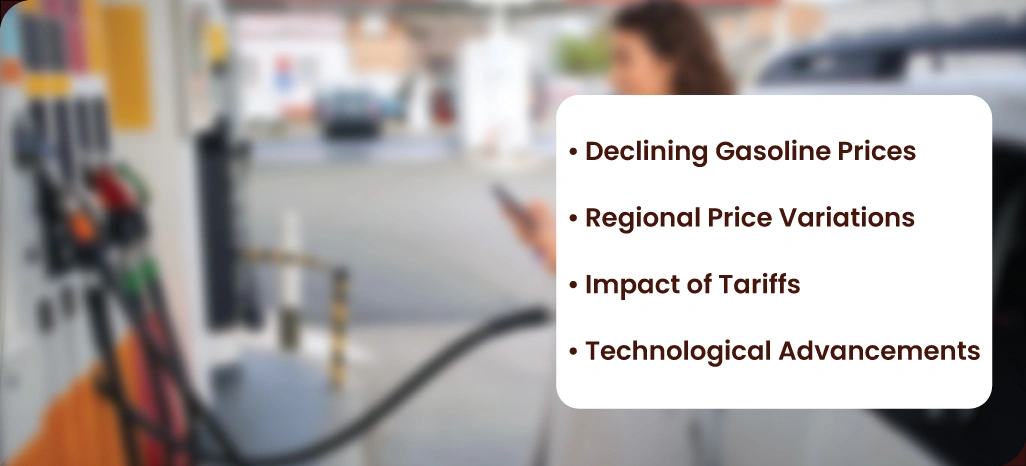
In 2025, the North American fuel market is experiencing significant shifts that are influencing pricing trends. Businesses, analysts, and consumers need to stay updated to make well-informed decisions. Through Fuel Pump Price Tracking 2025 and comprehensive gasoline and diesel price data, companies can monitor real-time trends, analyze market behavior, and refine their strategies effectively.
Key trends influencing fuel prices this year include:
- Declining Gasoline Prices: U.S. retail gasoline prices are projected to drop by around 3% compared to 2024, driven mainly by reduced crude oil costs and a gradual decline in gasoline consumption.
- Regional Price Variations: Fuel costs are not uniform across the continent. For example, states like Texas may enjoy lower prices, whereas California and similar regions could face higher expenses due to state taxes and local supply challenges.
- Impact of Tariffs: The introduction of tariffs on fuel imports from Mexico and Canada may increase fuel prices in specific areas, particularly affecting the U.S. Northeast.
- Technological Advancements: The growing adoption of electric vehicles (EVs) and alternative energy sources is beginning to reshape fuel demand, contributing to potential long-term price stabilization.
By leveraging Gasoline And Diesel Price Data Scraping, businesses can track these evolving trends in real time, enabling more intelligent decision-making and strategic adjustments in response to market fluctuations.
Strategic Applications of Fuel Price Data
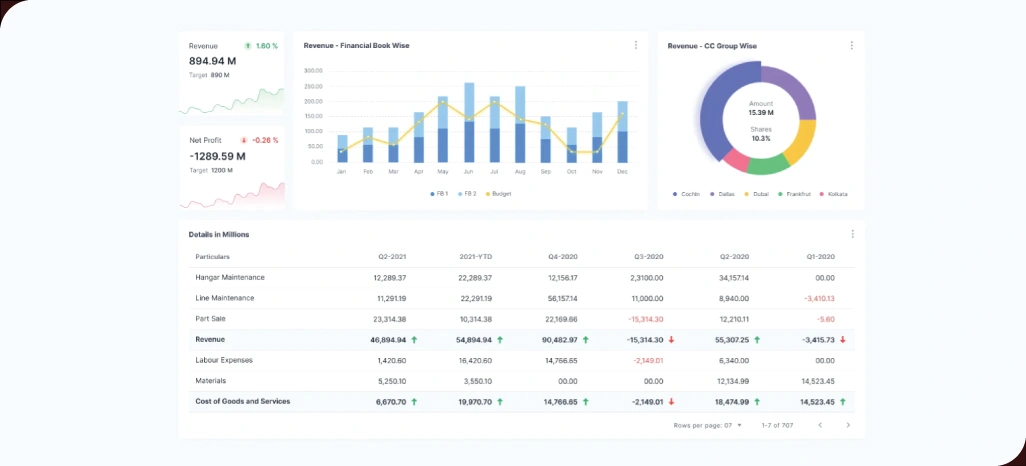
Fuel price information plays a critical role across industries, offering actionable insights that drive more intelligent decision-making. Leveraging Fuel Pricing Insights North America through advanced data scraping techniques allows organizations to respond proactively to market fluctuations and optimize their operations.
Key applications include:
1. Transportation and Logistics
- Optimize fuel procurement by tracking price variations across regions.
- Plan delivery routes more efficiently to reduce fuel consumption and operational costs.
- Manage fleet budgets with precise, real-time fuel expense forecasting.
2. Retail Sector
- Monitor local fuel price trends to adjust product and service pricing dynamically.
- Enhance competitive positioning by understanding how fuel costs impact consumer spending.
- Align promotional strategies with regional fuel cost fluctuations to maximize sales.
3. Financial Analysis and Investment
- Utilize accurate fuel price data for economic forecasting and risk assessment.
- Predict market movements influenced by fuel cost trends to inform investment strategies.
- Analyze correlations between fuel prices and broader economic indicators.
4. Policy and Regulatory Planning
- Support energy policy decisions with up-to-date, region-specific fuel data.
- Identify trends that inform regulatory adjustments or sustainability initiatives.
- Enable government agencies to anticipate market shifts and mitigate potential impacts.
By integrating Fuel Pricing Insights North America into their operational and strategic planning, businesses, analysts, and policymakers can make data-driven decisions that improve efficiency, enhance profitability, and ensure long-term competitiveness.
Overcoming Obstacles in Fuel Price Analysis
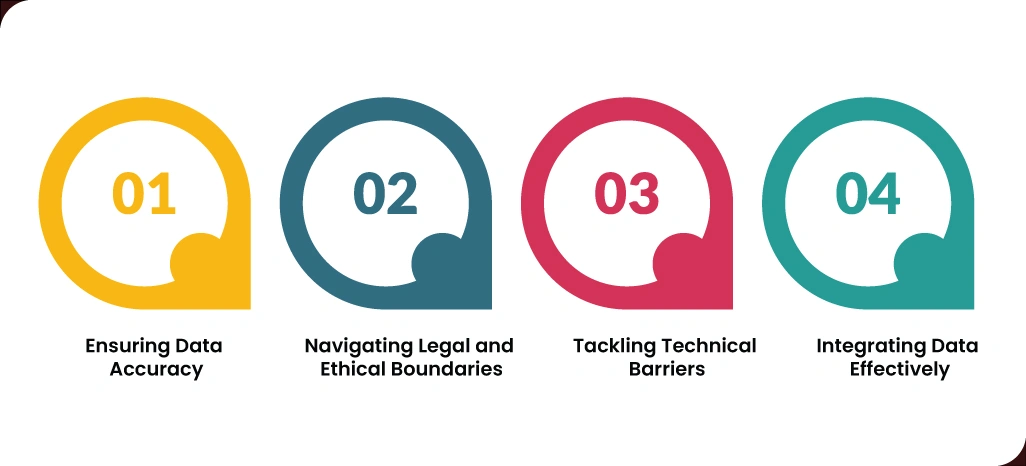
Fuel price data scraping provides significant insights, but organizations often face several challenges that must be managed carefully to maximize its value:
- Ensuring Data Accuracy: Reliable information is the backbone of informed decision-making. Inaccurate or incomplete scraped data can lead to flawed analyses, making it essential to implement robust validation processes during fuel price data scraping.
- Navigating Legal and Ethical Boundaries: Collecting data comes with its share of responsibilities. Adhering to legal guidelines and ethical standards
- Tackling Technical Barriers: Modern websites often deploy CAPTCHA systems, IP restrictions, and dynamic content that can impede data collection. Overcoming these obstacles requires sophisticated scraping tools and advanced fuel price data scraping techniques.
- Integrating Data Effectively: Combining newly scraped data with existing databases or internal systems can be complex. Proper integration strategies and expertise are crucial to ensure seamless use of insights derived from fuel price data scraping.
By proactively addressing these challenges, organizations can enhance the efficiency, reliability, and legality of their fuel price data scraping initiatives, ultimately turning raw information into actionable market intelligence.
How Retail Scrape Can Help You?
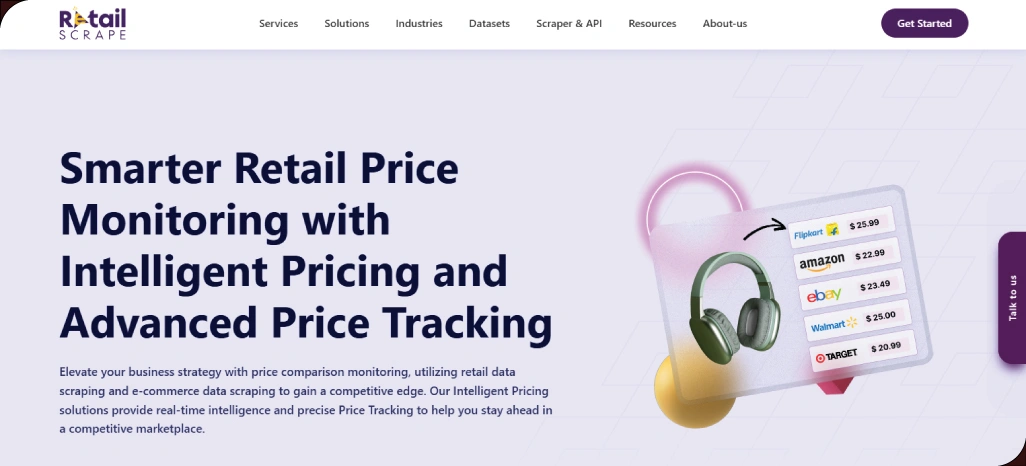
We empower your business with Fuel Pump Price Data Scraping, providing accurate and actionable market insights to inform more intelligent decisions in 2025. Our solutions are designed to simplify complex fuel pricing data collection and analysis, helping you stay informed and competitive.
Here’s how we can support your goals:
- Gather comprehensive pricing information from multiple sources efficiently.
- Ensure the collected data is organized and easily accessible for analysis.
- Enable trend identification and historical comparisons for better forecasting.
- Provide secure and reliable data handling to protect your information.
- Integrate insights seamlessly into your existing business workflows.
With our expertise, you can enhance your Fuel Pump Price Tracking 2025 efforts, making it easier to monitor, analyze, and act on real-time fuel price trends efficiently.
Conclusion
Accurate Fuel Pump Price Data Scraping is essential for businesses seeking to navigate the dynamic North American fuel market in 2025. Leveraging these insights allows companies to make informed decisions, optimize operations, and stay competitive in a fluctuating environment.
In addition, integrating Real-Time Fuel Price Monitoring helps track immediate market changes, ensuring timely responses to price shifts. To elevate your fuel pricing strategies and gain a competitive edge, contact Retail Scrape today and let our experts provide tailored solutions to meet your business needs.
